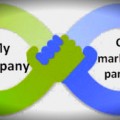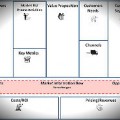(use translation widget right or bottom for other languages)
What is a content strategy?
Although you will most often see the term content strategy used for digital or web content strategy, it is more than just this. Content strategy refers to the planning, production, coordination and control (hence management) of every type of content (written, audio, video and sensory) delivered in any type of media you can think of (not just digital).
It requires the input of every single key resource in the company. Marketing and communication should however be responsible for the content strategy.
Subsets of content strategy would be digital, web, mobile or content marketing strategies. The latter having revenue generation as an ultimate goal.
Where does it fit in my business management?
Content strategy is a subset of your marketing and communication strategy which in turn is a subset of your overall business strategy.
What is in a content strategy?
The content strategy plans I have seen are all over the place as far as what is in them. The content strategy plans (not to be confused with digital or web content strategies) we do at Baker Marketing typically include:
- Content objectives (homogenization, consolidation, diversification or broader diffusion of content are common objectives)
- User experience touch point map. There can be maps for suppliers, partners, internal and external resources as well as customers (current and potential). This map can be used as a starting point for your customer/user experience design exercise as well.
- Types of content (what is already available and what is needed)
- Content distribution channels (medias). The ones already used and those needed.
- The content/media mix (usually presented in table form)
- What the competition is doing
- A crisis communication plan outline (optional)
- A SWOT analysis
- Recommendations
The content strategy feeds a content plan where you find a detailed plan with specific actions tied to objectives, a schedule, resources needed, control tools and processes as well as a detailed content budget.
To the small business owners who have not been scared off by all that a content strategy is, let me reassure you. A content strategy can be done quickly and simply in the case of most small businesses. The beauty of the content strategy is that it’s like Lego blocks. You can build on it as your business grows. You don’t have to do it all at once.
Does my business/organisation need a content strategy?
Just like any other actions you can take, the answer is only if it brings more to your bottom line than it costs to make and maintain one.
A good content strategy allows your business to reduce costs and increase revenues by:
- Ensuring all the content you produce contributes to your business objectives (in most businesses this alone will offset the cost of the content strategy and plan)
- Projecting a consistent image in the market across all media channels
- Getting the messages you want to the right people in the least costly way
- Reducing confusion
- Set guidelines for your web developers/content managers as well as marketing and communication campaigns
- Maximising the contribution of your content to your marketing and sales objectives
- Identifying potential communication issues before they arise
- Ensuring all stakeholders in your business share a common content strategy
In the end, a content strategy is another management tool in your arsenal to ensure your business runs efficiently.









